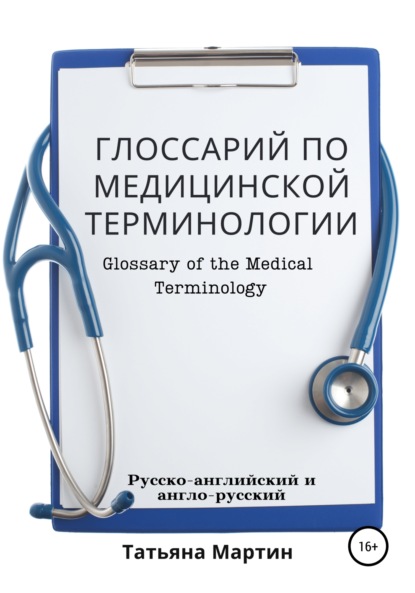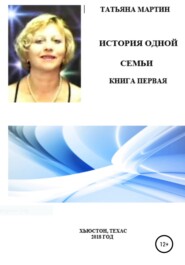По всем вопросам обращайтесь на: info@litportal.ru
(©) 2003-2025.
✖
Глоссарий по медицинской терминологии, русско-английский
Настройки чтения
Размер шрифта
Высота строк
Поля
1.2. Клетка. Cell
Клетка – структурно-функциональная элементарная единица строения и жизнедеятельности всех организмов. Обладает собственным обменом веществ, способна к самовоспроизведению.
The cell is the smallest unit of living matter. Cells are the basic building blocks of all living things. They provide structure for the body, take in nutrients from food, convert them into energy, and carry out specialized functions.
Типы клеток: в теле человека найдено свыше 200 различных типов клеток. И хотя у всех у них наследственное вещество одинаковое, в разных типах клеток активными являются различные участки наследственных молекул.
There are over 200 different cell types in the human body. Each cell type is specialized to carry out a particular function, either solely but usually by forming a particular tissue. Different tissues then combine and form specific organs, where the organ is like a factory where every type of cell has its own job.
Мышечные – это длинные, тонкие, сжимаются и расслабляются. Они обеспечивают перемещения в пространстве организма в целом, движение органов внутри организма. Свойством изменения формы обладают клетки многих тканей, но в мышечных тканях эта способность является главной функцией.
Muscle cells contain protein filaments of actin and myosin that slide past one another, producing a contraction that changes both the length and the shape of the cell. Muscles function to produce force and motion.
Основу нервных клеток составляют нейроны. Нейрон – электрически возбудимая клетка, которая предназначена для приёма извне, обработки, хранения, передачи и вывода вовне информации с помощью электрических и химических сигналов. Типичный нейрон состоит из тела клетки, дендритов и одного аксона. Нейроны могут соединяться один с другим, формируя нервные сети.
At the cellular level, the nervous system is defined by a special type of cells called neurons. Neurons have special structures that allow them to send signals to other cells in electrochemical waves and chemicals called neurotransmitters. A typical neuron consists of a cell body, dendrites, and a single axon. Neurons can connect to form neural networks.
Шестиугольные клетки печени участвуют в синтезе и хранении белков, трансформации углеводов, синтезе холестерина, желчных солей и фосфолипидов, детоксикации, модификации и выводе из организма эндогенных субстанций. Также гепатоциты инициируют процесс желчеобразования.
Hexagonal liver cells are involved in the synthesis and storage of proteins, the transformation of carbohydrates, the synthesis of cholesterol, bile salts, and phospholipids, detoxification, modification, and removal of endogenous substances from the body. Hepato cytes also initiate the process of bile formation.
Красные кровяные тельца, эритроциты – это наиболее многочисленный клеточный компонент крови. Они транспортируют кислород к тканям организма (из легких) и углекислый газ из тканей в легкие для его удаления из организма. Красные кровяные тельца имеют форму пончиков. Это двояковогнутые диски, форма которых позволяет им проходить через небольшие капилляры.
Red blood cells are in the form of a doughnut. Red blood cells, erythrocytes, are a type of blood cell primarily involved in the transportation of oxygen to body tissues (from the lungs) and carbon dioxide from the tissues to the lungs to be removed from the body. Red blood cells are shaped, kind of like donuts. They're biconcave discs, a shape that allows them to squeeze through small capillaries.
Клетки поджелудочной железы участвует в регуляции пищеварения и регуляции липидного обмена. Также, в поджелудочной железе есть клетки, выполняющие эндокринную функцию, клетки сферической формы участвующие в производстве инсулина.
The pancreatic cells produce digestive enzymes and secretions. The endocrine function of the pancreas helps maintain blood glucose levels. Types of pancreatic cells: alpha cells, which produce glucagon; beta cells, which produce insulin; delta cells, which produce somatostatin.
Клеточная стенка – оболочка клетки, расположенная снаружи от цитоплазматической мембраны, и выполняет структурные, защитные и транспортные функции.
A cell wall is a structural layer surrounding some types of cells just outside the cell membrane. It can be tough, flexible, and sometimes rigid. It provides the cell with both structural support and protection and also acts as a filtering mechanism.
Цитоплазма – полужидкое содержимое клетки, её внутренняя среда, кроме ядра и вакуоли, ограниченная плазматической мембраной, 70–80% воды. Цитоплазма содержит запас питательных веществ (капли жира, зёрна полисахаридов), а также нерастворимые отходы жизнедеятельности клетки.
Cytoplasm, the semifluid substance of a cell external to the nuclear membrane and internal to the cellular membrane. It is made up of mostly water and salt. The cytoplasm is responsible for holding the components of the cell and protects them from damage. It stores the molecules required for cellular processes and is also responsible for giving the cell its shape.
Хромосомы находятся в ядре клетки дезоксирибонуклеиновой кислоты (ДНК); каждая клетка содержит 46 хромосом (23 пары), тысячи ген.
A chromosome is a long DNA molecule with part or all of the genetic material of an organism found inside the nucleus of a cell. A chromosome is made up of proteins and DNA organized into genes. Each cell normally contains 23 pairs of chromosomes.
Органеллы располагаются во внутренней части клетки – цитоплазме, специализированы и выполняют конкретные функции, необходимые для нормальной работы клеток. Они имеют широкий круг обязанностей: от генерирования энергии до контроля роста и размножения клеток.
An organelle is a subcellular structure that has one or more specific jobs to perform in the cell, much like an organ does in the body. Among the more important cell organelles are the nuclei, which store genetic information; mitochondria, which produce chemical energy; and ribosomes, which assemble proteins.
Митохондрия – это двумембранный органоид эукариотической клетки (клетка, которая содержит ядро), основная функция которого синтез АТФ – источника энергии для жизнедеятельности клетки. Митохондрии обычно бобовидной формы. Также встречаются митохондрии сферической, нитевидной, спиралевидной формы.
Mitochondria are membrane-bound cell organelles (mitochondrion, singular) that generate most of the chemical energy needed to power the cell's biochemical reactions. Chemical energy produced by the mitochondria is stored in a small molecule called adenosine triphosphate (ATP).
Белки высокомолекулярные органические соединения. Характеризуются чрезвычайно высоким структурным и функциональным разнообразием.
Proteins are large, complex molecules that play many critical roles in the body. They do most of the work in cells and are required to structure, function, and regulate the body's tissues and organs.
Аппарат Гольджи, или комплекс Гольджи, – одно-мембранный органоид, обычно расположен около клеточного ядра. Являясь частью эндомембранной системы в цитоплазме, он упаковывает белки в мембраносвязанные везикулы внутри клетки, прежде чем везикулы будут отправлены по назначению.
The Golgi apparatus, also known as the Golgi complex, Golgi body, or simply the Golgi, is an organelle found in most eukaryotic cells. Part of the endomembrane system in the cytoplasm packages proteins into membrane-bound vesicles inside the cell before the vesicles are sent to their destination.
Рибосома – важнейшая не мембранная органелла всех живых клеток, служащая для биосинтеза белка из аминокислот по заданной матрице на основе генетической информации, предоставляемой матричной РНК (мРНК). Этот процесс называется трансляцией.
The ribosome is a particle present in all living cells and serves as the site of protein synthesis. The ribosome functions as follows: (1) translates encoded information from the cell nucleus provided by the ribonucleic acid messenger (mRNA), (2) Binds together amino acids selected and collected from the cytoplasm by ribonucleic acid (tRNA) transfer.
Митоз, мейоз – вид клеточного деления, который происходит в процессе роста и развития организма. На нём основывается деление всех существующих неполовых (соматических) клеток, а именно мышечных, нервных, эпителиальных и прочих. Деление половых клеток называется мейозом, оно сопровождается уменьшением числа хромосом в дочерних клетках вдвое.
Mitosis and meiosis are a type of cell division that occurs during the growth and development of the body. It is the basis for the division of all existing non-sexual (somatic) cells, namely muscle, nerve, epithelial, and others. The division of germ cells is called meiosis. It is accompanied by a decrease in the number of chromosomes in the daughter cells by half.
1.3. Основные плоскости тела и разрезы; Bodyplans
Анатомическая позиция. Лицом вперед, руки по швам и пальцы рук ладонями вперед
Anatomical position. Body with face forward, arm sat the side, palms facing forwards.
Сагитальный и срединный план. Тело делится на левую и правую часть. Срединная часть – это то, что находится в срединной плоскости.
Sagittal and Median plane. The body divides into right and left. The median plane is midline.
Поперечная плоскость. Делит тело на две части: верхнюю и нижнюю, плоскостью перпендикулярной высоте тела
Transverse plane. Divides the body into cranial and caudal (head and tail) portions. Axial – horizontal
Фронтальная или коронарная плоскость. Делит тело вертикально на заднюю и переднюю части.
Frontal or coronal plane. Divide body into dorsal and ventral (back and front, or posterior and anterior) portions
Задняя (тыльная) часть тела при вертикальном делении параллельно передней части лица
Posterior (or dorsal) Describes the back or direction toward the back of the body. The popliteus is posterior to the patella. Superior (or cranial) describes a position above or higher than another part of the body proper.
Передняя (вентральная) часть тела.
Anterior (or ventral) describes the front or direction toward the front of the body. Thetoesareanteriortothefoot.
Верхняя (краниальная)часть тела при делении горизонтальной плоскостью параллельно земли до пояса
Superior (Cephalic). Part from head. Transverse plane
Нижний (каудальный, хвостовой)это часть тела от пояса при делении горизонтальной плоскостью параллельно земли
Inferior (Caudal). Parttofeet. Transverse plane











